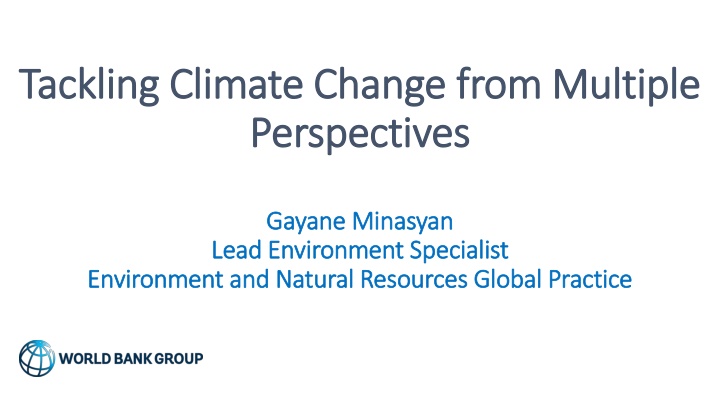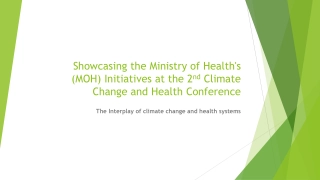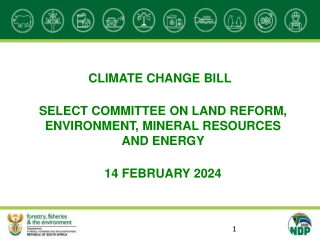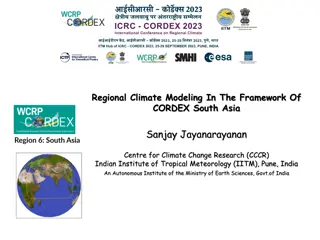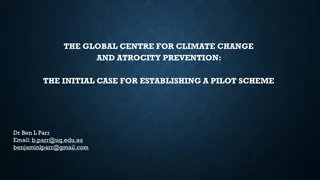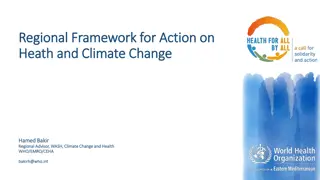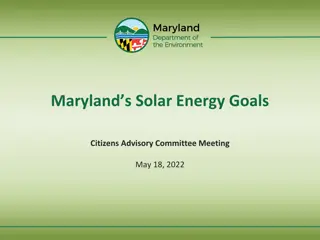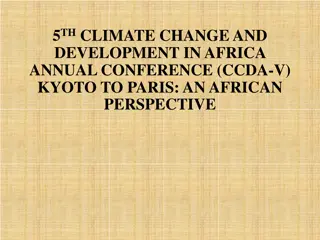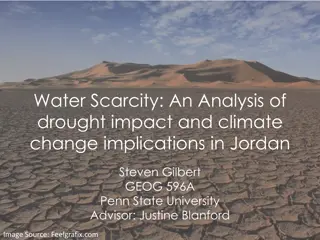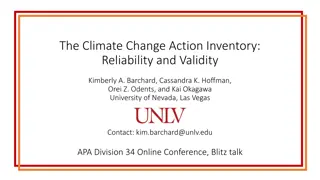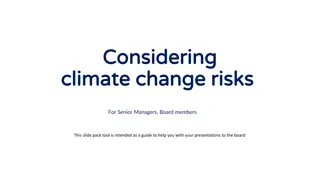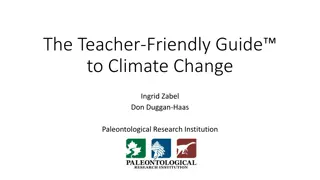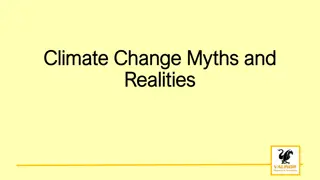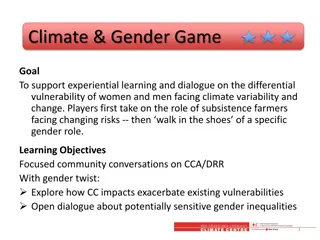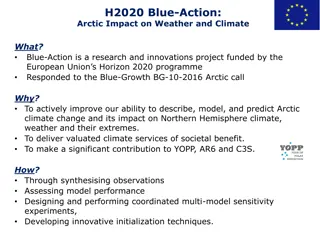Approaches to Climate Change: A Multi-Perspective Insight
Gayane Minasyan, a Lead Environment Specialist, delves into tackling climate change from various angles, providing a comprehensive overview of strategies and solutions. With a focus on the Environment and Natural Resources Global Practice, this exploration offers valuable insights into combating climate change challenges in today's world. Minasyan's expertise sheds light on the importance of a multi-faceted approach to address this critical issue.
Download Presentation

Please find below an Image/Link to download the presentation.
The content on the website is provided AS IS for your information and personal use only. It may not be sold, licensed, or shared on other websites without obtaining consent from the author.If you encounter any issues during the download, it is possible that the publisher has removed the file from their server.
You are allowed to download the files provided on this website for personal or commercial use, subject to the condition that they are used lawfully. All files are the property of their respective owners.
The content on the website is provided AS IS for your information and personal use only. It may not be sold, licensed, or shared on other websites without obtaining consent from the author.
E N D
Presentation Transcript
Tackling Climate Change from Multiple Tackling Climate Change from Multiple Perspectives Perspectives Gayane Minasyan Gayane Minasyan Lead Environment Specialist Lead Environment Specialist Environment and Natural Resources Global Practice Environment and Natural Resources Global Practice
Central Asia: Less Ready to Cope Central Asia: Less Ready to Cope Larger policy, institutional and capacity needs Vulnerability Larger adaptation investment needs TM TJ UZ KG Readiness KZ Source: Notre Dame Global Adaptation Index (ND-GAIN), http://index.gain.org/
Glacier Melt - 50-75%
River Runoff in Summer -25%
Irrigation Water Demand +30%
Crop yields -30%
Desertification Up to 50%
HPP Output -20%
Rural poor's in the front line Rural poor's in the front line 60 to 75% of the 60 to 75% of the Bottom 40% are Bottom 40% are rural rural Low productivity, with high Low productivity, with high land and environment land and environment degradation degradation Yield: Yield: - -20 % 20 % Poverty: +13% Poverty: +13%
WBG: Addressing Climate Change WBG: Addressing Climate Change through Central Asia (examples) through Central Asia (examples)
Knowledge and Capacity Base Knowledge and Capacity Base
Hydromet Modernization (CAHMP) Cooperation Cooperation on Resources on Resources & Challenges & Challenges Climate Adaptation and Mitigation (CAMP4ASB)
Ferghana Valley Water Management (several projects, TJ, UZ) Climate Climate- -smart Agriculture Agriculture smart Irrigation, drainage and water management in Karakalpakstan (2 projects in UZ) Sustainable Agriculture and Climate Mitigation (UZ)
Forest Protection and Reforestation Project (KZ) Pasture and Livestock Management Improvement Project (KG) Water, Land, Water, Land, and Forests and Forests Integrated Forest Ecosystem Management (KG) ELMARL (TJ) Syr Darya Control and Northern Aral Sea Project II (KZ)
Energy Sector Development Policy Operation (KG) Energy Loss Reduction Project (TJ) Sustainable Sustainable Energy Energy Advanced Electricity Metering Project (UZ) CASA (multi-country) Nurek HPP Rehabilitation (TJ)
Pilot Program for Climate Resilience (TJ, KG) Clean Technology Fund (KZ) Climate Climate Finance Finance Partnership for Market Readiness (KZ) GEF, SCCF (several countries)
What are we not doing that needs to be done? What should we (WBG) do of more? Questions for Questions for discussion discussion What specifically should do the Governments? What is the role of NGOs/civil society organizations?
